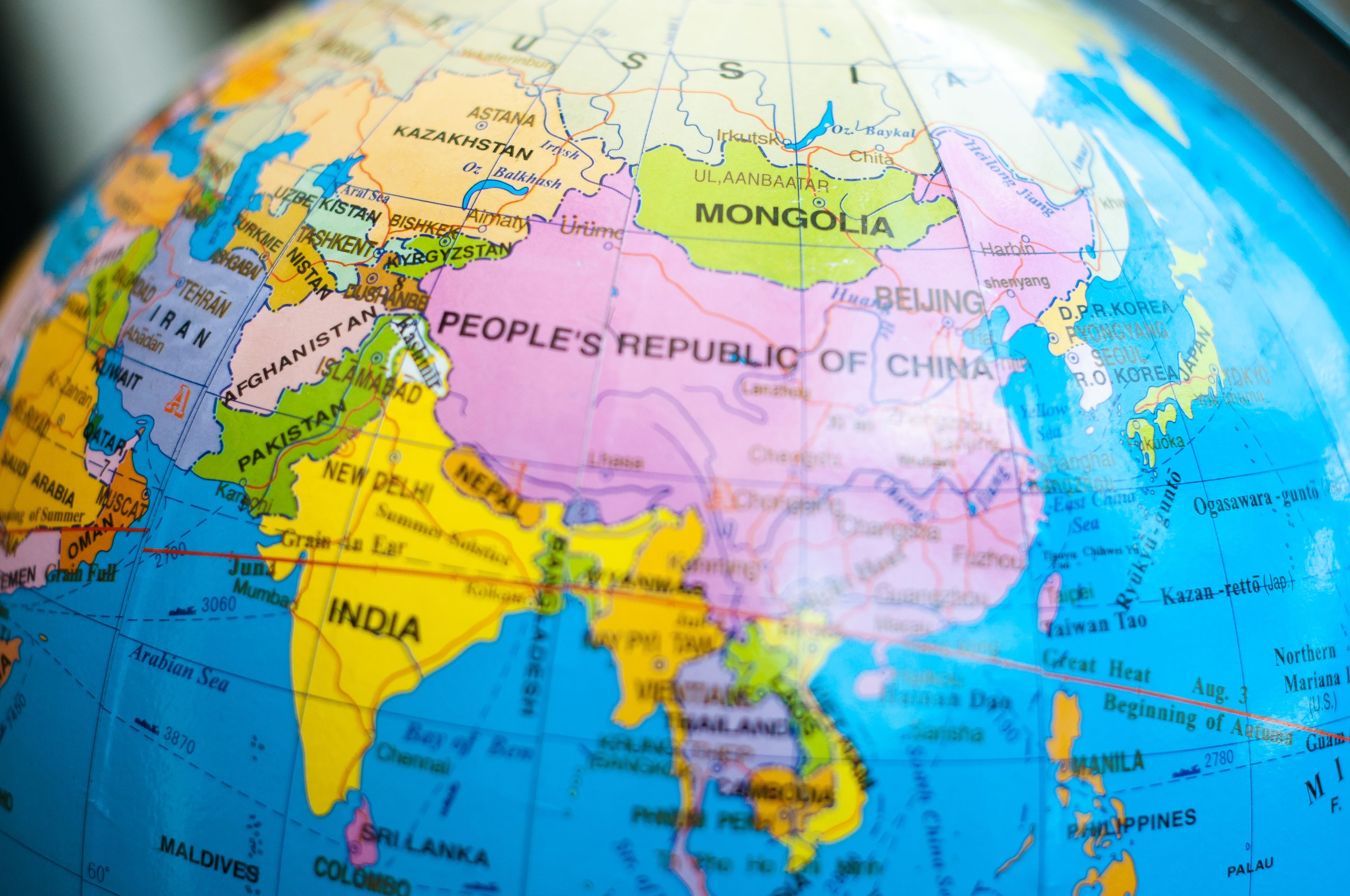Investing in emerging markets
Exploring the opportunities for investors in emerging markets


Over recent decades, certain emerging market regions have experienced rapid expansion, offering promising growth prospects compared to more established western economies.
For one, India is set to be the dominant force within emerging markets over the next few years.
But while emerging markets are more inefficient and provide the potential for higher growth, there are inherently more risks when investing in emerging markets relative to developed markets.
This report is worth 30 minutes of CPD.
Advisers mixed on emerging markets allocation

Advisers are mixed on their allocation plans for emerging markets, according to the latest FT Adviser poll for Talking Point.
Advisers were asked: How likely are you to increase your allocation to emerging markets over the next 12 months?
Almost half (47 per cent) said it was likely, 37 per cent said it was unlikely, while the remainder (16 per cent) were unsure.
On his approach to emerging markets, Philip Dragoumis, director and owner at Thera Wealth Management, says the company holds around a 10 per cent allocation to emerging markets within the equities portion of its client's investments and zero in bonds.
“This is pretty much in line with the global indices. We use emerging market equity index funds,” Dragoumis adds.
Also, while emerging markets have “markedly underperformed” the US in the past decade, Dragoumis says it is worth noting that they significantly outperformed in the 2000s.
He adds: “India has done well but China, which is still struggling to get back to its high levels of growth after Covid, has done badly. The region is still home to most of the world's population, accounts for most of its growth and future prospects, and has inexpensive valuations.
“We think it still makes sense to continue to allocate to the region at least in line with global market cap-weighted indices.
“It's interesting that Japan has recently been much keener to take measures to improve shareholder value and this is having a positive effect on its market. China may well do the same.”
Samuel Mather-Holgate, an independent financial adviser at Mather and Murray Financial, says India and Mexico are regions to watch.
Mather-Holgate adds: “India is set to be the 'new bull', with a population set to overtake China and a thriving IT sector, both internal and international businesses could thrive here in the next five years.
“Mexico is also a good bet, with US outsourcing coming back from the east to a more local country.
"Finally, Vietnam [is] the gem that hasn’t yet sparkled. This could be the year things emerge."
ima.jacksonobot@ft.com

India is set to be the 'new bull', according to market commentators. (yurakrasil/Envato Elements)
India is set to be the 'new bull', according to market commentators. (yurakrasil/Envato Elements)
Emerging market and growth drivers
India is set to be the dominant force within emerging markets over the next few years.
According to UN figures, with a population close to 1.5bn – where the average age is 30 – India has surpassed China.
Additionally, since the appointment of Prime Minister Narendra Modi in 2014, a wave of reforms are said to have catalysed growth.
Noteworthy developments include infrastructure investments, such as the digitisation of the economy, which has increased financial inclusion, ushering a wave of new investors.
This in turn has pushed investment into financial and technological disruption.
Carly Moorhouse, fund research analyst at Quilter Cheviot, says: “[India’s young population] should have an extremely positive impact on productivity going forward, as millions of people move into the middle class, and with this will come a very meaningful shift in consumption patterns and trends.
“Tech is also a strong theme for the region as technology continues to advance and will continue to do so into the future.”
But India is not the only emerging market country that is playing an important role in technological change.
Henry Ince, investment analyst at Hargreaves Lansdown, says: “Asia is home to some of the world’s great technological innovators.
“Demand for their services will only be increasing in years to come, which could provide promising opportunities for investors over the long term.”
Technological change
Saying that, within the world of tech, the impact of artificial intelligence on emerging markets is as yet unclear.
Ince adds: “At this point, it's premature to make a definitive assessment, but the long-term ramifications could be considerable. The digital infrastructure needed for AI tools is still inadequate, especially in many emerging countries where broad access to high-speed internet is still lacking.”
James Flintoft, head of investment solutions at AJ Bell, agrees.
He says: “It’s difficult to ascertain the impact of AI at this stage. This year we will see the challenges of managing elections with an increased presence of generative AI.
“Developed markets may be better placed to deal with these challenges owing to more developed monitoring and regulatory regimes, however all countries are likely to face issues that may shape perceptions of the use of AI going forward.”
While the development of AI in emerging markets is still at a very early stage, the countries in this region are becoming key in the production of the components needed for tech companies.
Emerging markets aren’t just a one-trick pony anymore.
Moorhouse notes countries like Taiwan and South Korea are at the heart of this innovation as they produce many of the key components integral to these technologies.
She adds: “We only need to look at AI and how this has altered the way companies all over the world do business, how people live their lives on a day-to-day basis, etc.
“Supply chain diversification has also been a trend that we have been seeing for many years, not least because of the Trump tariffs and Covid disruptions, but because China is no longer the cheapest place to manufacture goods.
“As China looks to move up the value chain with regards to manufacturing, and countries look to reduce costs and reliance on China, this is driving optimism for several countries in Asia and emerging markets such as Vietnam, India and Mexico.”
Access to diverse markets
Investing in emerging markets provides access to a diverse range of countries, from India and China to South Africa and Latin America.
As Ince explains, each of these areas "boasts unique economic landscapes", with some rich in natural resources, while others are reliant on exports to western markets, and are experiencing robust local consumer-driven growth.
Over recent decades, these markets have experienced rapid expansion, offering promising growth prospects compared to more established western economies.
Ince adds: “Emerging markets earn a place in a portfolio with a long-term time horizon, at least five to 10 years. Historically, they have been a source of capital growth, so they could be held as part of a broader global investment portfolio focused on growth.
“But they aren’t just a one-trick pony anymore. Some emerging markets funds also offer income with the proportion of emerging market companies paying dividends growing significantly since the turn of the century. These funds could be used to diversify a more adventurous portfolio focused on income.”
Geopolitics has heavily impacted sentiment within the emerging regions. Emerging markets typically exhibit more volatility than developed markets.
Flintoft notes that emerging market equities provide the opportunity to diversify away from developed markets that carry swathes of companies that are ex-growth owing to their reliance on domestic economic growth.
He adds: "Emerging market equities provide access to a source of long-term structural economic growth owing to favourable demographics (in most cases) that is often coupled with improving productivity.
"Not all of this growth will accrue to the local equity market, some of it will be captured by companies listed on developed equity markets and those in nearby countries, however a great deal of benefit should flow through the domestic market."
Geopolitics
While emerging markets are more inefficient and provide the potential for higher growth, there are inherently more risks when investing in emerging markets relative to developed markets.
And while geopolitics is something that has always been a concern when investing in emerging markets, today perhaps that issue has become even more prominent.
In the past two years alone, there has been the Russian invasion of Ukraine, the Israel-Gaza war, continuing tensions between China and the US, and heightened concerns around China’s plans for reunification with Taiwan to name a few.
The impact this has can vary widely, for example in very recent times we have seen the US threaten to blacklist Chinese biotech names several times, which has caused some fairly meaningful moves in their share prices.
Meanwhile the Russian invasion of Ukraine led to global sanctions on Russia and the subsequent removal of Russia from emerging market indices.
All this demonstrates that the impact on emerging market investments from geopolitics can be quite severe.
It’s also impossible to ignore the influence of the upcoming US election in November on emerging markets.
Daniel Pereira, investment manager at Square Mile Investment Consulting and Research, says: “Geopolitics has heavily impacted sentiment within the emerging regions. Emerging markets typically exhibit more volatility than developed markets.
“Simply put, weaker governance and oversight in emerging markets leaves the companies in the region being more exposed to controversies, as well as potential government interference.”
This year's elections hold particular significance for emerging markets, with more than 50 per cent of the MSCI Emerging Markets Index market capitalisation going to the polls.
And as Ince notes, elections and politics wield considerable influence over a country's economic policies, trade dynamics and welfare, impacting its global relations and market confidence.
He says: "This potential for change often introduces uncertainty, prompting investors to brace for volatility.
“From the vibrant streets of Mexico to the bustling markets of India and beyond, these electoral processes will be closely monitored by analysts, investors, and policymakers worldwide. Navigating geopolitics is inherent to investing, particularly in emerging markets.”
“It’s also impossible to ignore the influence of the upcoming US election in November on emerging markets. A lot of nations, especially smaller ones, tie their currencies to the US dollar. So, they’re more prone to US monetary policy shifts. The outcome, no matter who wins, will significantly shape foreign policy, particularly relations with China.”
While short-term market fluctuations may arise as investors react to unfolding events, Ince says he maintains the belief in the long-term investment potential of emerging markets.
Opting for a single-country fund to capitalise on a specific election outcome entails considerable risk, Ince adds.
Investing approach
Therefore, for investors eyeing opportunities in emerging markets and willing to embrace the associated higher risk, Ince recommends starting with a diversified global emerging markets approach.
Determining the optimal allocation within a portfolio depends on individual risk tolerance, he adds.
Ince says: "For those already exposed to a broader emerging markets fund, adopting a core-satellite approach may be prudent, with the core made up of global and emerging markets funds and single-country funds serving as supplementary holdings.
“Given the intricacies of emerging markets, we advocate active management by experienced professionals equipped with on-the-ground resources, ensuring informed decision-making in navigating this dynamic investment landscape.”
James Klempster, deputy head of the Liontrust multi-asset team, says at present the team does not make regional allocations within emerging markets and believes it is best to leave decisions over weightings to specific markets to active fund managers with the freedom to invest across emerging markets.
Klempster adds: “There are a number of idiosyncratic risks, material regional differences and differing political regimes across what is a very disparate group of countries.
“It therefore makes sense to invest via a basket of active managers with a blend of styles to express an allocation at a regional level.”
Emerging markets tend to be more susceptible to economic risks, however developed markets have certainly experienced their fair share of rising rates and inflation over the last few years.
Much of the negativity towards emerging markets stems from concerns over the economic outlook for China, given its significance within emerging markets indices.
Nonetheless, Klempster says it is important to separate the macro from the investment case and be mindful that a market can still perform strongly even when the macro-economic backdrop looks challenging.
He adds: “Once this negative sentiment shifts and valuations reflect reality more closely, investors may enjoy an additional boost to performance, but ultimately market fundamentals drive stock markets.”
While emerging markets have a less rosy history when it comes to shareholder protection and the politics in some of these economies is more combustible, in addition to the usual considerations pertaining to a market’s fundamental attractiveness, Klempster says a risk premium should also be demanded by investors for the idiosyncrasies of less developed shareholder protection.
On the home front
Domestic politics can also play a huge role as authoritarian regimes are more prevalent in emerging countries.
Moorhouse says this can lead to extreme volatility as policies and regulations, among other things, can be very quickly enforced or changed.
Currencies in emerging markets are also prone to greater moves for a number of reasons, such as that they are relatively illiquid, and they are linked more to capital outflows.
Additionally, for many emerging markets, a large share of their credit, trade and debt is US dollar denominated.
Moorhouse adds: “Emerging markets tend to be more susceptible to economic risks, such as high inflation, interest rate fluctuations, and debt defaults, however developed markets have certainly experienced their fair share of rising rates and inflation over the last few years.
“Finally, governance is also seen to be weaker in emerging markets and there are more concerns around legal ownership and property rights.
“These are all risks that need to be considered when investing in emerging markets and incorporated in analyst considerations to ensure you are being adequately compensated by the growth potential to make it worth taking the risk.”
ima.jacksonobot@ft.com





Emerging markets: the high price of growth
What do growth investing and luxury goods have in common?
In both cases, the customers view a high price tag as something desirable; as something that enhances their experience of owning the product in question.
And for a Rolex watch that may intuitively make sense; a more expensive watch likely means more precious materials, more gemstones and better engineering, as well as conveying the idea that the owner of it has the means to afford it.
For a stock, however, it is a little more counter-intuitive. A stock is a financial asset. Put simply it is a means to store and grow your wealth, and as such, making a virtue out of paying top dollar for it is a little odd.
One does not often hear people boast about paying the highest interest on their mortgages or credit cards, or being a client of a financial institution where you pay the highest fees for the same products.
As value investors, we are firmly of the view that we should treat equity investing as a financial asset, not as a luxury good.
Nowhere is this tendency to overpay more pronounced than in emerging markets equities.
The asset class is synonymous with growth: growth in GDP, growth in population, and growth as an investing style that is most suitable to capitalise on these positive structural trends.
However, what is often and conveniently forgotten is that wherever there is growth in main indicators such as GDP per capita, this information is very quickly noticed and internalised by the market.
Investors get excited by highly growing economies and companies, and what usually follows is overshooting expectations, irrational exuberance, and, ultimately, stretched valuations.
On the other hand, areas of the market with more latent growth, or those going through temporary challenges, get sold off indiscriminately, allowing a patient stock-picker to feast on these market mood swings and find extremely compelling valued stocks.
Our mantra as managers of emerging markets value strategy at Schroders is "the lower the price that you pay for an asset, the higher your potential return".
We look for stocks that are undervalued because they are misunderstood, for example because the macro or political situation in the country of operations is unfavourable.
South Korea, for instance, has for many years been seen as a market that was cheap for good reason. Korean companies are associated with conglomerate structures, cross-holdings and big cash piles that are never distributed to shareholders in the form of dividends or buybacks.
For those reasons of poor corporate governance, Korean stocks have always carried a discount, making the valuations across the index very low.
However, while all of that has been true for the past two decades, just a few months ago the Korean regulator came out with what is called 'the value up’ programme, where they have asked the companies trading below book value to submit a plan about how to close that discount, effectively forcing the companies to adopt measures to remedy the issues; simplify the corporate structures, crystallise value by listing subsidiaries, pay dividends, implement buybacks and so on.
This is a fantastic development that, coupled with low valuations, has sent the Korean banks’ shares – one of the main beneficiaries of the value up programme – up some 40 per cent on average in the past few months.
This is a great example of how an overlooked and undervalued portion of the market can re-rate and reward those investors who were brave enough to buy into it at discounted valuations.
For every South Korea that surprises investors on the upside, there will be a growth market that disappoints.
One of the world’s greatest growth stories of the past few decades is, of course, China.
The achievement over the past 30 years has been astronomical: GDP per capita has gone from around $400 (£318) in the early 1990s to almost $13,000 today – that is an increase of more than 30 times in the space of just one generation.
You would think that investing into this one-of-a-kind period of wealth creation would have yielded fantastic results.
Unfortunately, the actual return on MSCI China in USD has, in fact, been negative.
It is down 45 per cent in absolute terms over 30 years, or an average of -2 per cent return per year.
The main reason for this discrepancy is that Chinese companies took advantage of investor enthusiasm and high valuations and issued an enormous amount of additional equity, diluting their investors and supressing EPS growth, which ultimately led to such poor returns on such a good growth story.
As China’s equity market shows, not everything that shines turns out to be gold.
When it comes to investing, it is often more fruitful to look for gold in companies that are outside of the spotlight, using low valuations as your guide to finding outsized returns.
Vera German is co-manager of the emerging market value strategy at Schroders
For professional investors only. The material is not suitable for retail clients.
This information is a marketing communication. This information is not an offer, solicitation or recommendation to buy or sell any financial instrument or to adopt any investment strategy. Information herein is believed to be reliable but we do not warrant its completeness or accuracy.
The material is not intended to provide, and should not be relied on for accounting, legal or tax advice. Reliance should not be placed on any views or information in the material when taking individual investment and/or strategic decisions.
Any references to securities, sectors, regions and/or countries are for illustrative purposes only. Schroders has expressed its own views and opinions in this document and these may change.
The forecasts included are not guaranteed; they are provided only as at the date of issue and should not be relied upon. Our forecasts are based on our own assumptions which may change. We accept no responsibility for any errors of fact or opinion and assume no obligation to provide you with any changes to our assumptions or forecasts. Forecasts and assumptions may be affected by external economic or other factors.




